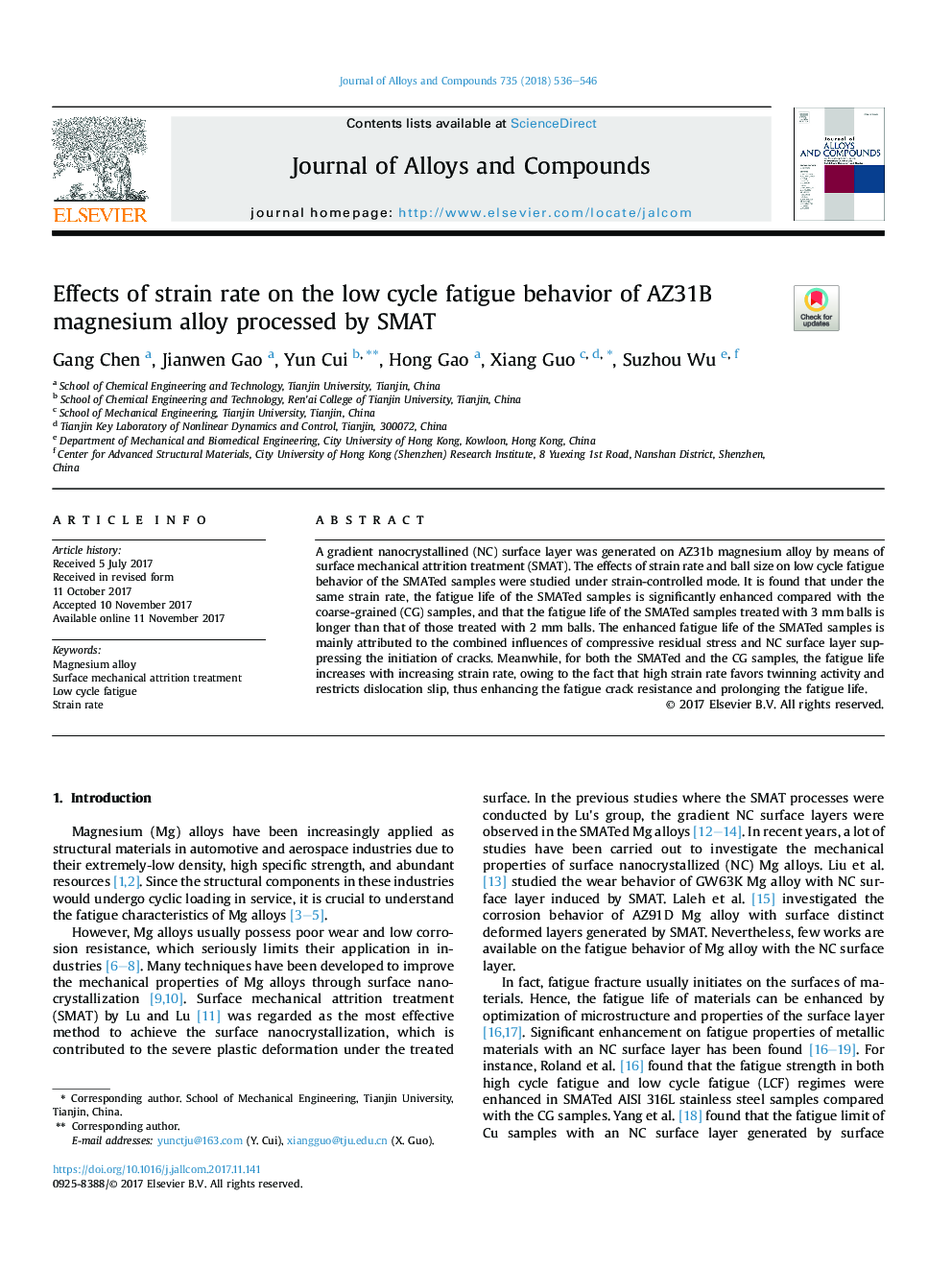| Article ID | Journal | Published Year | Pages | File Type |
|---|---|---|---|---|
| 7994711 | Journal of Alloys and Compounds | 2018 | 11 Pages |
Abstract
A gradient nanocrystallined (NC) surface layer was generated on AZ31b magnesium alloy by means of surface mechanical attrition treatment (SMAT). The effects of strain rate and ball size on low cycle fatigue behavior of the SMATed samples were studied under strain-controlled mode. It is found that under the same strain rate, the fatigue life of the SMATed samples is significantly enhanced compared with the coarse-grained (CG) samples, and that the fatigue life of the SMATed samples treated with 3Â mm balls is longer than that of those treated with 2Â mm balls. The enhanced fatigue life of the SMATed samples is mainly attributed to the combined influences of compressive residual stress and NC surface layer suppressing the initiation of cracks. Meanwhile, for both the SMATed and the CG samples, the fatigue life increases with increasing strain rate, owing to the fact that high strain rate favors twinning activity and restricts dislocation slip, thus enhancing the fatigue crack resistance and prolonging the fatigue life.
Related Topics
Physical Sciences and Engineering
Materials Science
Metals and Alloys
Authors
Gang Chen, Jianwen Gao, Yun Cui, Hong Gao, Xiang Guo, Suzhou Wu,
